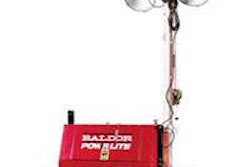The sky would not fall this time either
Signs of the apocalypse were unmistakable in 1993.
An epic late winter storm lashed the entire U.S. East Coast with high winds, Biblical snows and Arctic cold. Birmingham, Ala., took 70 mph winds, 13 inches of snow, and saw temperatures plunge to 2 degrees Fahrenheit. Sixty inches of snow buried the mountains of North Carolina. Upstate New York saw 40 inches of snow in two days.
A female jockey won a Triple Crown horse race for the first time in history.
Fox Broadcasting Corporation was formed.
Torrential summer rains engulfed the Mississippi and Missouri river valleys, creating $12 billion in crop and property damage, the worst flood damage in recorded U.S. history.
And Congress raised the fuel tax.
In 1993, the average price of gasoline ranged from just under $1 a gallon to $1.10 nationwide. Those prices weren’t affected by the fuel tax because Congress didn’t actually increase it that year. Congress just made permanent a “temporary” 2.5 cents-per-gallon deficit-reduction tax and transferred it to the Highway Trust Fund. Two cents was for roads, a half cent for transit, if you’re keeping score.
In 1990, when the “temporary” tax was enacted, it was part of a 5-cent increase in the fuel tax, the other half of the increase going directly to the Highway Trust Fund.
I put “temporary” in quotation marks because there is a long history of “temporary” increases in the fuel tax —- all the way back to 1940 —- and none of them has been temporary. It’s a sign. Messing with the federal fuel tax has always been an act that struck mortal fear in the hearts of American politicians.
No wonder today’s Democratic majority wets its pants when the subject of a fuel tax increase comes up. No wonder the Republican minority turns its back on the subject and howls small government slogans at the moon.
And yet . . . and yet there is ample precedent for major increases in the fuel tax in difficult times, with everyone living to tell about it.
In 1982, with the economy in the clutches of a devastating recession, President Ronald Reagan, the high priest of small government, signed into law a 5-cent increase in the federal fuel tax. Yes, an amount that makes today’s pols weak in the knees. The equivalent today would be closer to 10 cents per gallon, taking into account more than a quarter century of inflation. That increase took the federal fuel tax from 4 cents to 9 cents per gallon – a 125 percent increase, if you’re keeping score. And the economy enjoyed a strong recovery anyway, moving from a negative GDP in 1982 to 4.5 percent growth in 1983.
In 1990, with the U.S. economy slipping into a cyclical recession, President George H.W. Bush and a Democratic Congress bumped the fuel tax by a nickel again. Again, no one died. The economy cycled normally and began the longest, strongest growth period in recent U.S. history in 1992.
There is a lesson in all this, and the lesson is that the stated fears of a fuel tax increase on the political left and right are a lot of bunk. For the past five years, our gasoline prices have fluctuated by anywhere from 50 cents to $2 per gallon each year; given that kind of volatility, an extra dime or a quarter per gallon would affect the national economy and the average motorist about as much as a ban on hitchhiking.
In contrast, that same investment in roads and bridges would reduce the cost of transporting goods, enhance the quality of life for many Americans, and employ millions in good jobs doing important work.v











